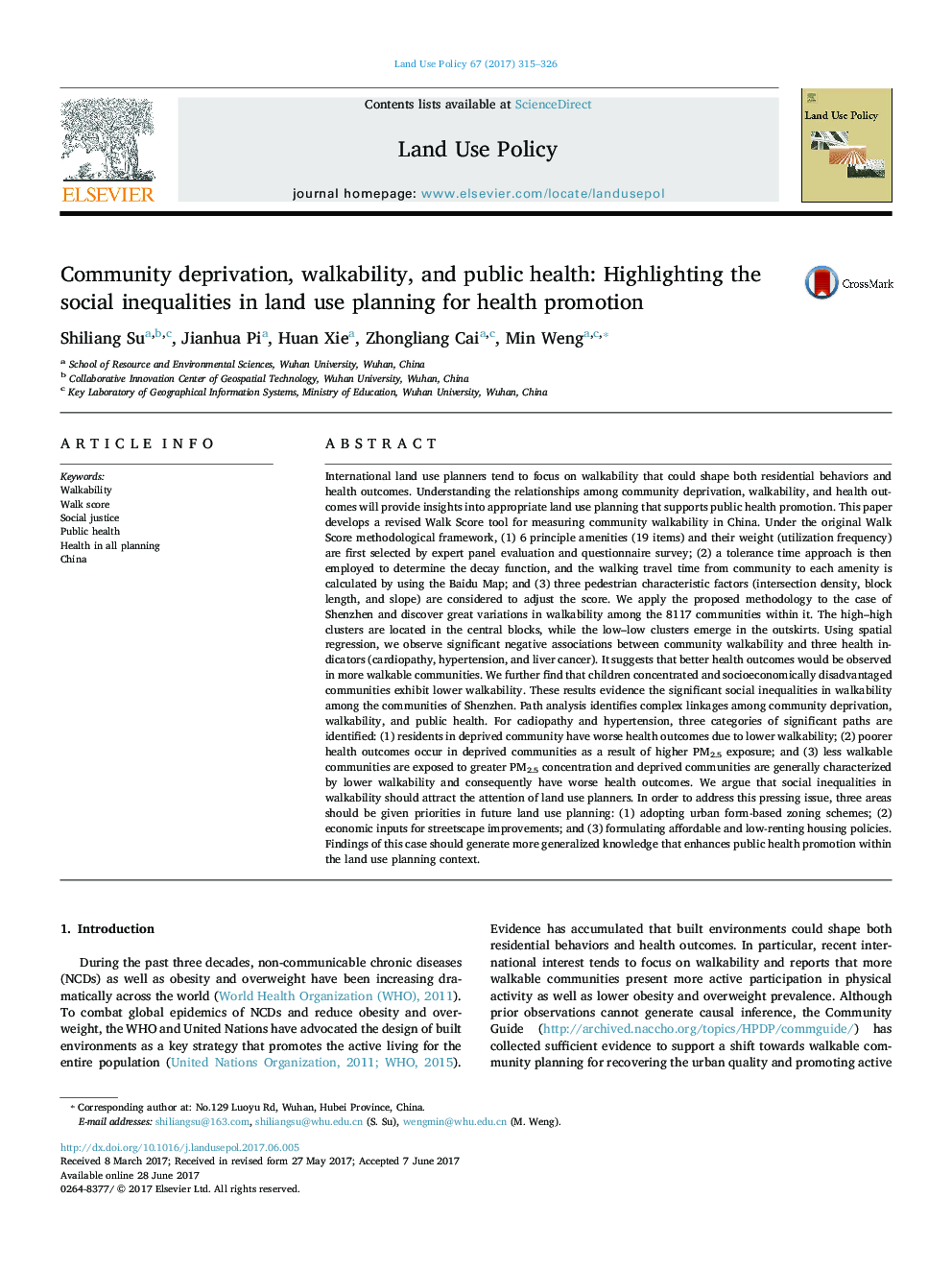| کد مقاله | کد نشریه | سال انتشار | مقاله انگلیسی | نسخه تمام متن |
|---|---|---|---|---|
| 6460672 | 1421816 | 2017 | 12 صفحه PDF | دانلود رایگان |
International land use planners tend to focus on walkability that could shape both residential behaviors and health outcomes. Understanding the relationships among community deprivation, walkability, and health outcomes will provide insights into appropriate land use planning that supports public health promotion. This paper develops a revised Walk Score tool for measuring community walkability in China. Under the original Walk Score methodological framework, (1) 6 principle amenities (19 items) and their weight (utilization frequency) are first selected by expert panel evaluation and questionnaire survey; (2) a tolerance time approach is then employed to determine the decay function, and the walking travel time from community to each amenity is calculated by using the Baidu Map; and (3) three pedestrian characteristic factors (intersection density, block length, and slope) are considered to adjust the score. We apply the proposed methodology to the case of Shenzhen and discover great variations in walkability among the 8117 communities within it. The high-high clusters are located in the central blocks, while the low-low clusters emerge in the outskirts. Using spatial regression, we observe significant negative associations between community walkability and three health indicators (cardiopathy, hypertension, and liver cancer). It suggests that better health outcomes would be observed in more walkable communities. We further find that children concentrated and socioeconomically disadvantaged communities exhibit lower walkability. These results evidence the significant social inequalities in walkability among the communities of Shenzhen. Path analysis identifies complex linkages among community deprivation, walkability, and public health. For cadiopathy and hypertension, three categories of significant paths are identified: (1) residents in deprived community have worse health outcomes due to lower walkability; (2) poorer health outcomes occur in deprived communities as a result of higher PM2.5 exposure; and (3) less walkable communities are exposed to greater PM2.5 concentration and deprived communities are generally characterized by lower walkability and consequently have worse health outcomes. We argue that social inequalities in walkability should attract the attention of land use planners. In order to address this pressing issue, three areas should be given priorities in future land use planning: (1) adopting urban form-based zoning schemes; (2) economic inputs for streetscape improvements; and (3) formulating affordable and low-renting housing policies. Findings of this case should generate more generalized knowledge that enhances public health promotion within the land use planning context.
Journal: Land Use Policy - Volume 67, September 2017, Pages 315-326
